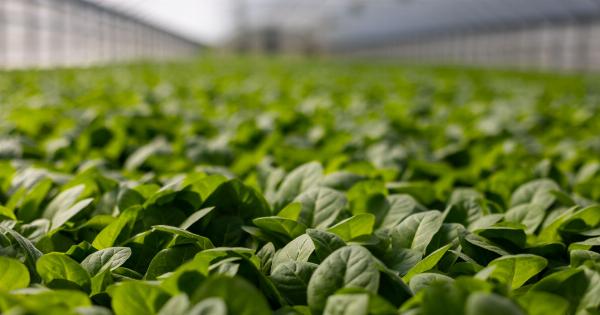Foods around the world have been modified and altered for a variety of reasons, including increasing their nutritional value, improving taste and texture, enhancing shelf life, and boosting crop yields.
While some modifications involve traditional breeding methods, others require advanced genetic engineering techniques. In this article, we will explore 30 commonly modified foods and the reasons behind their modifications.
1. Apples
Apples have been modified to resist diseases, pests, and fungal infections, resulting in higher crop yields and reduced need for pesticides. The Arctic Apple, for example, is genetically engineered to prevent browning when sliced.
2. Corn
Corn has been genetically modified to resist pests, such as the European corn borer, and to tolerate herbicides, allowing for more efficient weed control. These modifications have increased corn yields and made farming more sustainable.
3. Soybeans
Genetically modified soybeans have traits like resistance to herbicides and protection against pests. This has led to higher crop yields, reduced use of pesticides, and improved weed control.
4. Tomatoes
Modified tomatoes exhibit traits such as delayed ripening, better disease resistance, and improved shelf life. These modifications help minimize post-harvest losses and ensure tomatoes reach consumers in a fresher state.
5. Potatoes
Potatoes have been modified to resist pests, such as the Colorado potato beetle, and to reduce bruising and browning. These modifications improve crop yields, minimize waste, and enhance the visual appeal of potatoes.
6. Rice
Genetically modified rice has been developed to enhance its nutritional value. For example, Golden Rice is engineered to contain beta-carotene, which the body converts into Vitamin A.
This modification aims to combat Vitamin A deficiency, especially in developing countries.
7. Salmon
Genetically modified salmon, known as AquAdvantage salmon, grow faster and reach market size in less time than conventional salmon. This modification aims to increase the efficiency of salmon farming and meet the growing demand for seafood.
8. Papaya
Papaya plants have been genetically modified to resist the Papaya Ringspot Virus, a devastating disease that can lead to significant crop losses. Through genetic engineering, the plants can combat the virus and ensure healthy yields.
9. Cotton
Modified cotton varieties produce toxic proteins that repel pests such as bollworms and reduce damage to the plants. This modification results in higher yields, reduced pesticide use, and improved fiber quality.
10. Canola
Genetically modified canola has been designed to resist herbicides, making weed control more effective. Additionally, it has been modified to produce healthier oils with altered fatty acid compositions, benefitting both consumers and producers.
11. Wheat
Scientists have modified wheat to increase its resistance to diseases, such as fungal infections and rust. These modifications protect crops, improve yields, and ensure a more reliable food supply.
12. Oranges
Oranges have been modified to resist citrus greening disease, a bacterial infection that severely affects citrus crops. Through genetic engineering, scientists aim to preserve the vibrant citrus industry and prevent yield losses.
13. Sugar Beets
Genetically modified sugar beets have been engineered to tolerate herbicides, enabling better weed control and increased crop yields. These modifications contribute to a more sustainable and efficient sugar production.
14. Squash
Squash plants have been genetically modified to resist viral infections that can greatly reduce crop productivity. By enhancing their disease resistance, scientists ensure higher yields and quality produce.
15. Eggplant
Genetically modified eggplants, also known as Bt Brinjal, are modified to resist pests and reduce the need for insecticides. These modifications enhance crop yields and minimize the negative environmental impact of conventional farming practices.
16. Peanuts
Peanuts have been modified to reduce their allergenic potential, making them safer for those with peanut allergies. This modification aims to improve food safety and allow a wider range of individuals to enjoy peanut-based products.
17. Cabbage
Cabbage crops have been modified to resist damage from diamondback moths, pests that can cause significant yield losses. By incorporating pest resistance traits, farmers can protect their crops and increase productivity.
18. Paprika
Paprika peppers have been genetically modified to withstand pepper viruses and produce higher yields. This modification ensures a stable supply of paprika, a popular spice known for its vibrant color and distinct flavor.
19. Carrots
Carrots have been modified to contain higher levels of beneficial nutrients like Vitamin A and antioxidants. These modifications enhance the nutritional value of carrots and promote better health among consumers.
20. Wheatgrass
Wheatgrass has been modified to enhance its nutritional composition, making it a more potent source of vitamins, minerals, and antioxidants. This modification supports the growing trend of consuming wheatgrass as a health supplement.
21. Cornflakes
Cornflakes have been modified to have improved texture, crispiness, and flavor. These modifications enhance the consumer experience and make cornflakes a popular choice for breakfast cereals worldwide.
22. Soy Milk
Soy milk has been modified to have better consistency, taste, and nutritional content. These modifications have contributed to the increasing popularity of soy milk as a dairy alternative for health-conscious individuals.
23. Bread
Bread has been modified to have improved shelf life, texture, and nutritional value. These modifications help to ensure longer product freshness, better consumer satisfaction, and increased overall food quality.
24. Yogurt
Yogurt has been modified to contain specific strains of beneficial bacteria, promoting gut health and improving digestion. These modifications have made yogurt a staple food in many cultures, known for its probiotic properties.
25. Chicken
Chicken breeds have been selectively bred to grow larger and develop more efficiently, resulting in meatier and more productive birds. These modifications address the increasing demand for poultry products worldwide.
26. Beef
Beef cattle have been selectively bred to yield higher meat production and possess desirable traits like marbling and tenderness. These modifications ensure better quality beef and meet consumer preferences.
27. Milk
Cows have been selectively bred and modified to have higher milk production and improved milk composition. These modifications contribute to the dairy industry by increasing efficiency and meeting consumer demand.
28. Cheese
Cheese production involves modifications such as selecting specific bacterial cultures and altering aging processes to achieve desired flavors, textures, and shelf lives. These modifications cater to diverse cheese preferences worldwide.
29. Ice Cream
Ice cream recipes have been modified to create various flavors, textures, and consistencies. These modifications have enriched the ice cream industry, satisfying the cravings of countless ice cream enthusiasts.
30. Chocolate
Chocolate formulations have been modified to incorporate different ingredients, flavors, and fillings, expanding its range of delectable options. These modifications contribute to the versatility and popularity of chocolate worldwide.






























